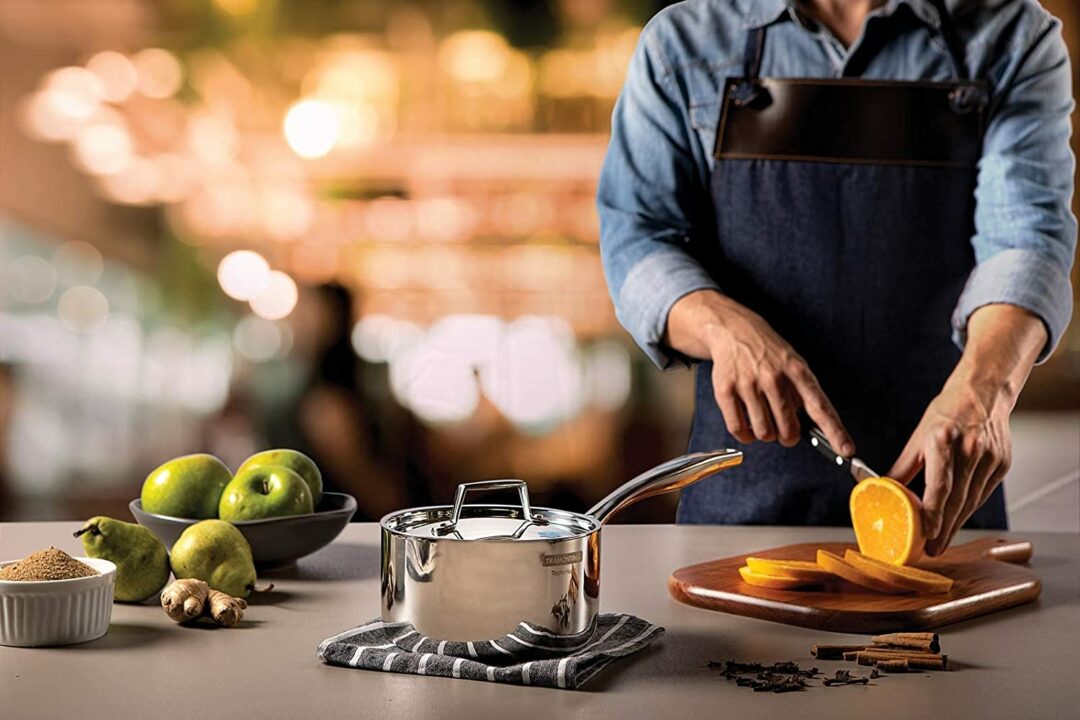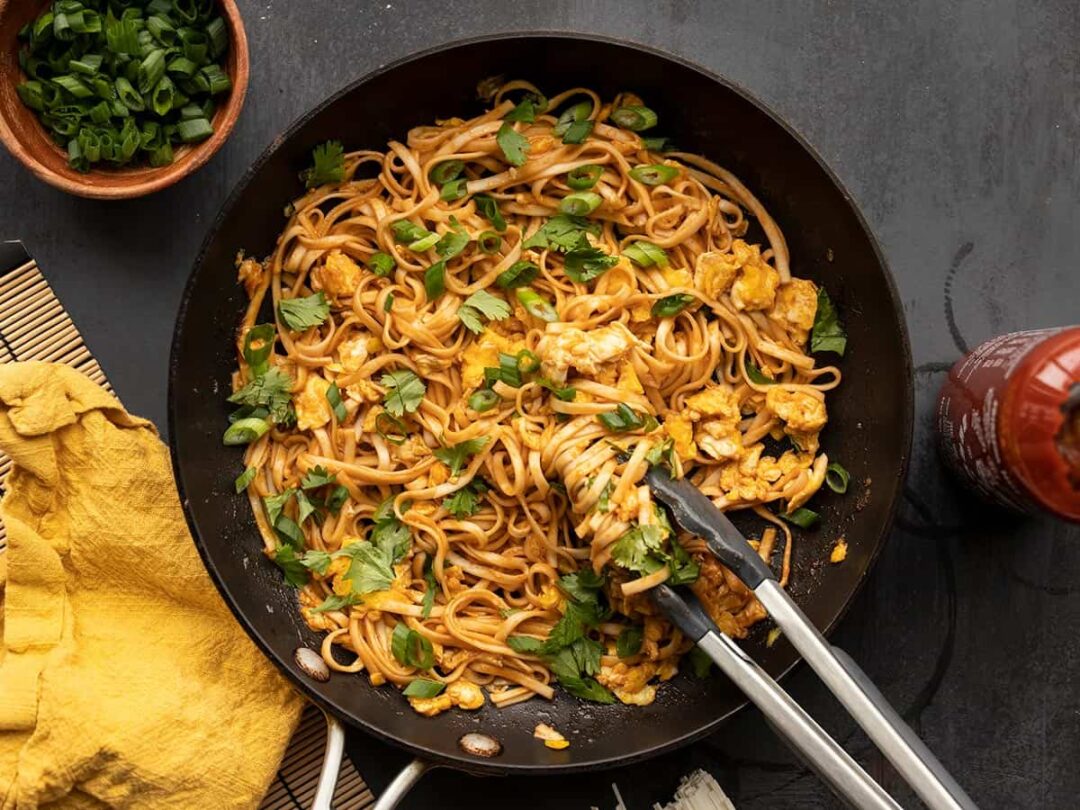Have you ever taken much of your time for the purpose of purchasing cookingware?
You feel like in the dilemma whether to choose this one or another.
When it comes down to the sizes, shapes, colors, functions of kitchenware, you have a sense of not getting wind of the fact about these cooking utensils.
If you see yourself in the below cases, this article from Apronese is yours.
Particularly, we will go deep into the question: What Size Saucepan Do I Need? to help you gain better knowledge of your similar kitchen tools.
What Is A Saucepan?
From the very beginner to the professional cookware enthusiast, Saucepan to them is considered a must-have kitchen gadget for every cooking corner. Basically, this type of pan appears with a wide range of essential benefits to help any home chefs deal with their daily dishes.
Saucepan’s asset is massive capacity with firmly long handle and straight sides, providing you with safe and comfortable grip. Additionally, it allows you to move your hand effortlessly and stays cool temperature while stirring or whisking. Most of them often come with a fitted lid to reduce evaporation.
We may easily see that Saucepans’s sizes are in variation.
And the question people ask is: what is a saucepan used for? In your opinion, is a sauce useful in your kitchen, for cooking, sautéing, frying, frying, ironing, soup, or all.
Small layout of them are created to hold only a little quantity of foods and ingredients, whereas the big sizes plays an essential role in boiling and heating large amount of ingredients and liquid such as water, sauce for pasta,…

How Do You Tell What Size a Saucepan Is?
The size of a saucepan can be approximated with your naked eye, but in fact, manufacturers often record the size of each saucepan on their products. Each type will have many different sizes, from 2-4 liters depending on the needs and preferences of consumers.
What Is the Average Size of a Saucepan?
As a staple of the kitchen, the saucepan is also a must-have, and is used for heating liquids of all types. There are many common sizes to choose from, including 1-1.5 quart, 2-2.5 quart, 3-quart, and 4-quart all of which are great for heating all sorts of liquids.
What is the Smallest Size Saucepan?
There are many types of small saucepans available, ranging from 1-2.5 quarts, that are good for portioning soups, sauces, oatmeal, and grains. Because small saucepans are easy to wash and store, they are great for small families, lone cooks, and people who heat small amounts of liquid often.
How Big Is a Large Saucepan?
Some people just find that 2-3 quart saucepans are really versatile, especially for everyday cooking. Others find that they just need one 3 or 4 quart pot to do the job.
In most homes, having two saucepans is a good balance of utility and style. A small saucepan, 1.5 or 2 quarts in size, plus a larger saucepan of 3 or 4 quarts is a nice matching combo for most purposes.

What Size Saucepan Do I Need?
In general, to know what size saucepan is right for your needs, purposes as well as the daily dishes that your family cooks is not too difficult. You choose based on the number of members of your family, how the need to use it is most reasonable.
Household Size
In order to determine how many people you cook for regularly, it is important to ask yourself how many people you are cooking for. If you do not live with many people, a smaller saucepan will be perfect. Two-quart saucepans can accommodate everything from sauces to rice.
It is also a good idea to buy a larger saucepan if you are going to cook for a family of four every evening, as that will save you time, as you will be able to cook in larger batches, and you will be able to save money.
You should consider the frequency with which you will cook and the average size of the meal you will prepare when choosing the right size saucepan for your cooking needs.
Types of Cooking
It is also important to take into account the types of foods you normally cook when you are determining the appropriate saucepan size.
When you are preparing mostly sauces for your dish, you only need a 1- or 2.5-quart saucepan. However, for dishes like pasta or rice, you will need a 3- or 4-quart saucepan, since you will be preparing more fluid foods like sauces.
It is important to know that you can comfortably cook seven hard-boiled eggs in a saucepan that holds 2 quarts without having the eggs stack on top of one another.
Ensure that you use a saucepan that provides you with enough room to cook whatever you are cooking. If you use a sauce pan that is too small, and you are cooking the ingredients at the same time, it can cause liquid to boil over, causing a mess.
Evaporation Rate
In saucepans with high evaporation rates, sauces, soups, and stews tend to reduce much more quickly due to the high evaporation rate.
There are some situations in which you may want to increase the evaporation rate, and there are others in which you may want to slow it down.
A person can control the rate of evaporation by adjusting the heat or by covering or uncovering the pan, depending on the temperature.
It is true that larger saucepans that have wider diameters will have a higher rate of evaporation than smaller saucepans that have narrower diameters, but it is not always the case.
Why Saucepan Size Matters?

Of course, any pan can be used, but using it for the right purpose with its size will create more delicious and standard dishes as well as easier for the user.
Choosing the right saucepan for you requires an understanding of how the size will affect different factors. Below is a list of key factors to keep in mind when you are buying a saucepan.
Movability
Another factor that needs to be taken into consideration is maneuverability.
If you are going to cook something that will be simmering all day, such as a stew, then a larger saucepan will be more difficult to maneuver. Nevertheless, that isn’t a problem if you plan to cook something that will both simmer and cook all day.
In some instances, however, you will have to lift your pan from the stove very frequently to prepare certain dishes. This is why you may want to consider a smaller saucepan size if you plan to prepare dishes that require you to raise the lid frequently.
Heat Conduction
There is a direct relationship between the size of the saucepan and the time it takes to heat up.
In comparison to a four quart pan, a two quart saucepan may get your dish heated much faster. However, it will also come with the risk of burning your dish if you do not keep an eye on it closely while it is cooking.
It is likely that you will get impatient when you have to wait for the water to boil and you don’t need the extra storage space then it may be worthwhile to consider a smaller saucepan if you feel the need to be impatient.
In general, a saucepan with a 4 quart capacity takes the longest to heat up. In comparison, larger saucepans are better suited to long, slow simmers. For something that will heat or boil quickly, choose a smaller saucepan.
Storage Space
Assuming that you do not intend to keep your saucepan on a countertop, you will have to consider how you will store your saucepan.
As a rule of thumb, the larger the saucepan is, the more storage space you will require. Larger saucepans also require longer handles since they are curved at the bottom.
In order to determine which size pan will be the most comfortable to fit into your cabinet, check the dimensions and depth of your cabinet. Refer back to the chart for the heights and diameters of each type of saucepan.

With Apronese, choosing a suitable pan is not too difficult, because each one has different uses and purposes. If you are a newbie, of course, it is not so easy to choose the size of your saucepan, depending on the number of people in your family, and the dishes you make every day. The above article is full and detailed for you to learn, please share these useful things to more people.







